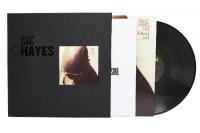For those who love this album to death, I would at least expected a small note compared to the MFSL version...
Isaac Hayes’ Benchmark 1969 LP Hot Buttered Soul Soars to New Soulsville Heights Thanks to 180g AAA Small Batch Treatment From Craft Recordings
In the circles of soul music fans, Isaac Hayes’ seminal June 1969 LP Hot Buttered Soul is well-known as a landmark recording, an album that helped break down conventions of what a hit soul recording could be. This four-song album continued the evolution of listening habits that saw consumers moving further away from singles and more toward full albums, and it embraced the opportunity to present longer-form listening experiences not necessarily dependent on AM radio play.
The backstory on Hot Buttered Soul is fascinating. In short, at that time, Hayes — who was already an established songwriter, session musician, and producer for Stax recording artists — wanted to make strong albums under his own name to get his solo career off the ground. After the brief misstep of March 1968’s Presenting Issac Hayes on Enterprise/Atlantic, Hot Buttered Soul was intended to be his true musical birth — and what a revelation it was!
Not only that, but Hot Buttered Soul debuted on the Billboard R&B Albums chart on July 12, 1969, where it posted up for 68 weeks, peaking at No. 1 for ten of them. Over on the Top 200 Albums chart, the LP went to No. 8 — sealing it as a certified crossover hit, to say the least.
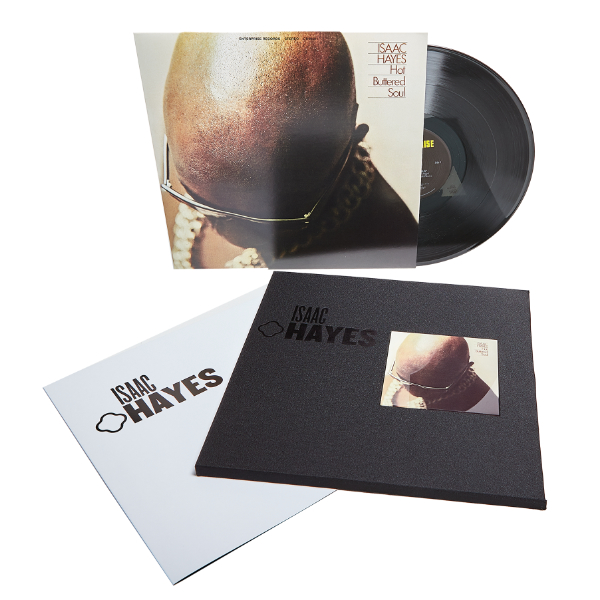
And now, thanks to Craft Recordings, we get a new, AAA Small Batch 180g 1LP edition of Hot Buttered Soul to enjoy. Before we go much deeper into how this new edition Stax up (apologies for the avoidable punning), let’s see what the official press release shares regarding all the important DNA that went into its creation: “Handpicked from Craft’s extensive catalog, each Small Batch release offers listeners the highest-quality, authentic sound — distilled to its purest form. As with all albums in the series, Hot Buttered Soul features lacquers cut from the original tapes (AAA) by Bernie Grundman and pressed on 180-gram vinyl at RTI with Neotech’s VR900 compound. Using a one-step lacquer process (as opposed to the standard three-step process), this technique allows for the utmost level of musical detail, clarity, and dynamics while reducing the amount of surface noise on the record. The limited nature of these pressings guarantees that each record is a true representation of the original lacquer and is as close as the listener can get to the original recording.”
The SRP for the Small Batch edition of Hot Buttered Soul — which is limited to 3,000 copies — is $109, and it is available exclusively via Craft Recordings and Acoustic Sounds. You can order it right here, and you can also watch the official unboxing video for it in the YouTube clip below.
As far as justification for the admittedly hefty Small Batch SRP goes, that will ultimately come down to your love for this music. Looking at Discogs at the time of this posting, there were just four NM 1969 originals of Hot Buttered Soul available, ranging in price from about $50 to $80. There were also only two comparable 1972 represses available selling for considerably less — something that may be significant to some of you. (More on that in a bit.)
So, yes, as with most of these uber-priced editions of classic albums, you, the discerning listener, must really love a recording to justify the investment — and, to be sure, there is indeed much to love here on the Small Batch Hot Buttered Soul — so you may want go ahead and order your copy of it ASAP before it’s sold out.
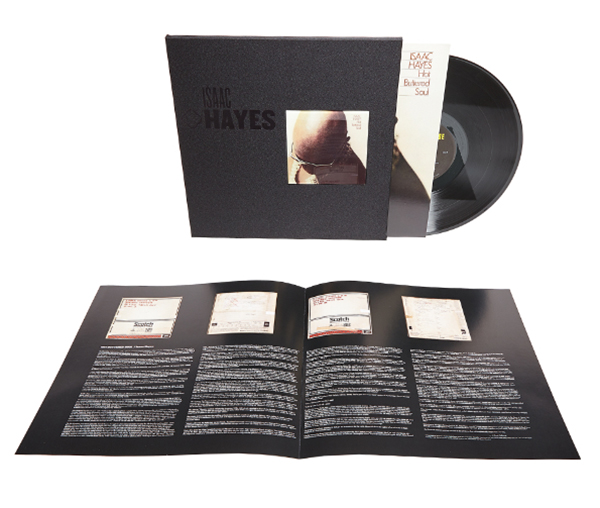
Setting the wayback machine for late-1968, it helps to remember that this time period marked the dawn of higher fidelity, less commercial, and less restrictive so-called underground FM radio. FM stations were beginning to play longer, more freeform music and offer more diverse playlists. Expansive, album-side-length jams from artists like Cream, Procol Harum, the Grateful Dead, the Jimi Hendrix Experience, Iron Butterfly, and Frank Zappa certainly proved the interest was there in popular music — not just jazz — for longer-length tracks that required attentive listening.
This notion crossed over into the world of soul music when Hayes’ 45-minute, four-song sophomore masterpiece Hot Buttered Soul was released on Enterprise in 1969. This album established his future career, and it was certified gold by selling 500,000 albums (which, at that time, was a big achievement, especially for a new artist). With Hot Buttered Soul, Hayes influenced a new generation of progressive, modern, and expansive soul recordings featuring oft-slow burning, sometimes slinky, and inevitably hip-swaying smooth grooves. Adding in introspective and (at times) politically aware lyrics astride a rich bed of sophisticated musicality — orchestral strings, horns, soaring post-psychedelic electric guitar, synthesizers, and more — proved to be a tasty recipe for success. That is some serious sonic umami there, for sure!
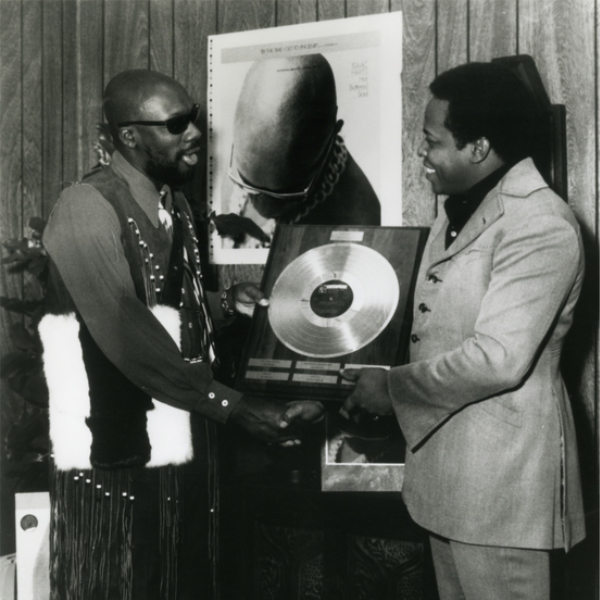
Hot Buttered Soul opened the door for more expansive albums by many of Hayes’ contemporaries, such as Marvin Gaye’s May 1971 classic What’s Going On, Curtis Mayfield’s deeply felt October 1971 LP Roots, The Temptations’ March 1970 effort Psychedelic Shack, War’s November 1972 groundbreaking The World Is a Ghetto, and Stevie Wonder’s March 1972 masterpiece Music of My Mind (for starters). Can you even imagine if Hayes had failed here, and never got the chance to make his iconic, mega-smash hit from 1971, “Theme From Shaft”?
Anyway, if you close your eyes while listening to how Hayes takes his time in setting up the storyline for his arrangement of Jimmy Webb’s “By the Time I Get to Phoenix” (Side 2, Track 2) — fully preparing the listener by explaining: “I’m gonna bring it on down to Soulville” — you can feel the church-like roots of a passionate storyteller creating a film for your ears.
A semi-brief sidenote: no less than Bruce Springsteen would bring this concept to his own early rock ’n’ soul onstage revue with The E Street Band a few years later, both on LP and in live performance. As an example: check out early Bruce tracks like “New York City Serenade” (Side 2, Track 3, on his November 1973 Columbia LP, The Wild, The Innocent & The E Street Shuffle). And while there are many live examples, I recommend seeking out Bruce’s epic 1976 live take of The Animals’ “It’s Life” from New York’s Palladium, and listen for how he sets up the band on a slow-burning, two-chord vamp while his powerful tale of independence never fails to mesmerize and send shivers down the spine.
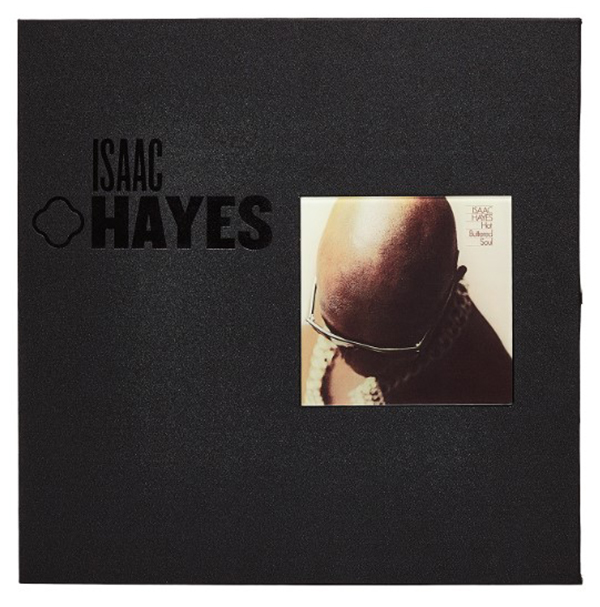
Getting back to Issac Hayes, Hot Buttered Soul was originally issued on the Enterprise label, a subsidiary of Stax. Despite its massive popularity, finding clean copies of it on the used market is not particularly easy. Oddly, the album is not a super-rare item in the sense of it commanding enormous value among collectors. This is especially curious — from this writer/collector’s vantage point, at least — because in many instances, albums that have been frequently sampled by other artists and DJs like this one has can often pump up the value of original editions significantly.
Perhaps it is a testament to the reality that Hot Buttered Soul was in fact so super-popular and widely available that it is still fairly affordable in the used marketplace — despite the fact that tracks like (deep breath) “Hyperbolicsyllabicsesquedalymistic” (Side 1, Track 2) were sampled by no less than Public Enemy, Ice Cube, N.W.A, and Tha Dogg Pound, according to the new Small Batch edition’s extensive (albeit too tiny!) liner notes. They also inform us that “Walk on By” (Side 1, Track 1) has been “sampled internationally 118 times by the likes of Faith Evans, The Notorious B.I.G., Beyoncé, 2Pac, Neneh Cherry, Cypress Hill, Alicia Keys (who introduced Ike for his induction into The Rock & Roll Hall of Fame), and The Jackson 5.” Clearly, when it comes to rare record collecting, supply and demand often rule the day, but in the case of the well-sampled Hot Buttered Soul, it’s not a “rare” example, in that sense. That doesn’t make it any less good, of course!
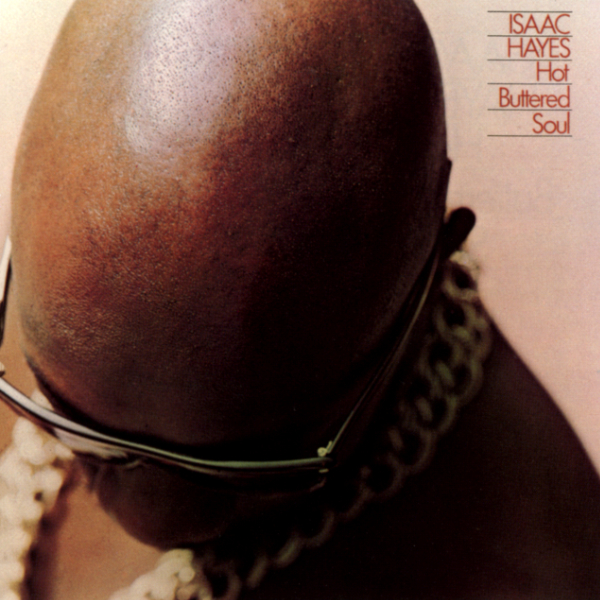
All that said, I have two early pressings of Hot Buttered Soul in my collection, one of them being a well-loved first pressing with the yellow Enterprise Records logo on it. The other is a near-perfect condition second edition, probably from around 1972, with the rainbow-styled label and different mastering. I bring this up because record collector’s logic often assumes first presses are immediately the best and most desired — the first cut (if you will) off the master tape — and the original impression of what the music should sound like. I understand this notion — and, often times, it is an accurate assumption.
In the instance of Hot Buttered Soul, however, the mastering on my later pressing actually sounds fuller and richer, less compressed, and more detailed than the original. The stereo separation feels more distinct on this new Craft Small Batch edition as well, especially when the orchestral strings and horns start filling in the mix.
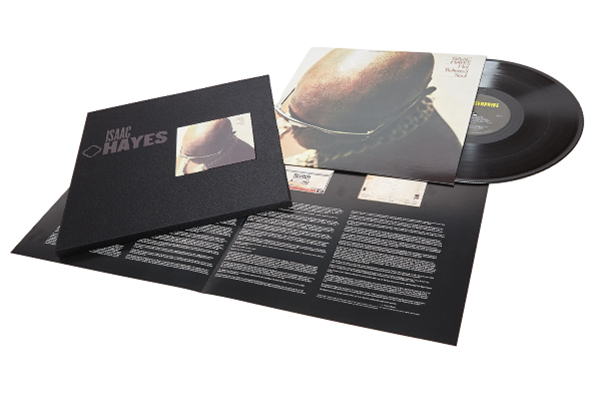
In that light, this new Craft edition of Hot Buttered Soul is quite interesting. While it physically “looks” like a first pressing from the high-quality cover art down to the label design, it actually sounds more akin to the second pressing — only better still!
In fact, the Craft Small Batch edition of Hot Buttered Soul sounds way better than my first pressing — and, again, it fares more akin to the sonic landscapes of the 1972 edition. The music on the new deluxe pressing sounds more balanced, open, and airy, delivering a greater sense of how the fantastic backing band — The Bar-Kays — sounded in the studio. The new Small Batch vinyl is also, of course, perfectly centered, and it's dead-quiet as far as surface noise goes.
Having the album perfectly centered is a big deal for this fan of Hot Buttered Soul. Historically, my biggest ongoing problem with the early editions I have owned over the years has in fact been off-center pressings that make the album’s crucial slow-churning organ and piano chords waver just enough to sound annoyingly out of tune. This was always especially distracting for me on those final notes of “By the Time I Get to Phoenix” (Side 2, Track 2). So, this new edition goes a long, long way to finally correcting that problem.
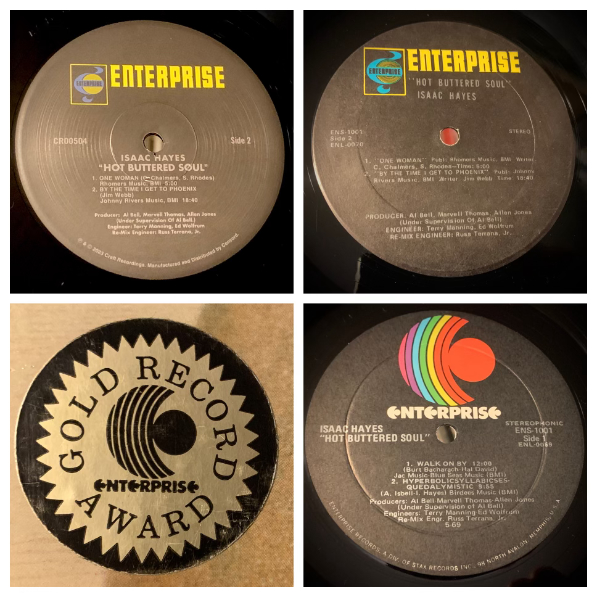
Perhaps the only ding I can point out is the Craft team didn’t quite get the colors perfect in the original Enterprise Records label printing process — something you can see in the collage above, as compared to the first pressing shown at the upper right. But other than that, Craft nailed all the other key production details, including the cover image quality and superior, thick cardboard album sleeve construction.
As far as our numeric rankings go, the Music is a 10 for sure. And now, with the Craft Small Batch edition, Hot Buttered Soul sounds better than ever, so we give it a realistic and solid 9.5 for Sound (which, due to various visual-construct reasons, may only appear as a 9 on the ratings knob graphic). Hot Buttered Soul is a fine album indeed — but there is no doubt production advances would leap ahead further in short order, making other period classics like Stevie Wonder’s August 1973 benchmark LP Innervisions and even Hayes’ own July 1971 soundtrack to Shaft demo-disc worthy, purely from a high-fidelity point of view. Regardless, Hot Buttered Soul is arguably where it all began.
The bottom line is, it is hard to fault this new release. If you love Isaac Hayes’ Hot Buttered Soul, you’ll absolutely need to put aside the coin required to afford a copy of Craft Recordings’ Small Batch edition of it for your collection and continual listening enjoyment before they’re all snapped up.
Mark Smotroff is an avid vinyl collector who has also worked in marketing communications for decades. He has reviewed music for AudiophileReview.com, among others, and you can see more of his impressive C.V. at LinkedIn.
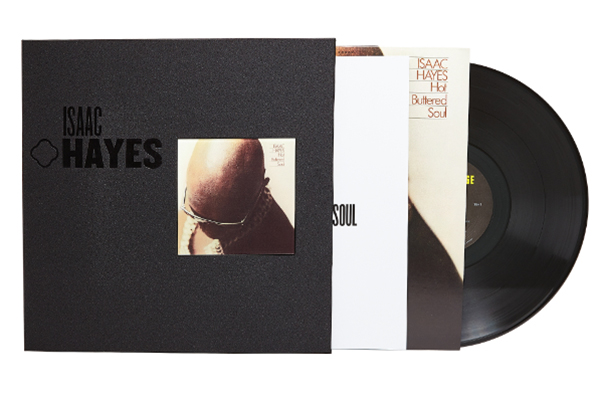
ISAAC HAYES
HOT BUTTERED SOUL
180g 1LP (Craft Recordings)
Side 1
1. Walk On By
2. Hyperbolicsyllabicsesquedalymistic
Side 2
1. One Woman
2. By The Time I Get To Phoenix
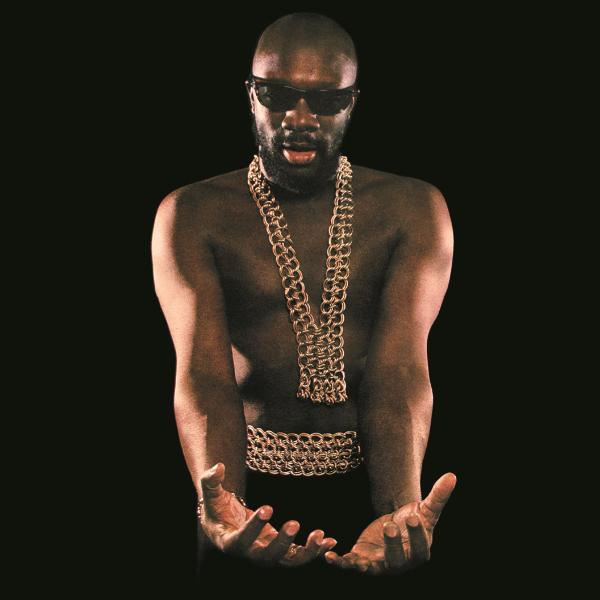
- Log in or register to post comments

How does this expensive one step pressing compare to the earlier Craft 33.33 AAA remaster (from 2018 or 2019)?

I haven't compered it, but I wouldn't assume the 2018 remaster is AAA. Doesn't say so on the sticker, and has that vague language of "audio remastered fromthe orignal analog tapes" which could mean "we digitized the master tape and cut from the files".

Isaac Hayes' iconic album "Hot Buttered Soul" has always been a masterpiece, but hearing it with the deluxe treatment from Craft Recordings takes it to a whole new level of soulful bliss. The attention to detail in the 180g AAA Small Batch treatment ensures that every note, every groove, is preserved and celebrated in all its glory. This isn't just music; it's a transcendent experience that transports you to the heart of Soulsville, where Hayes' genius reigns supreme. Here's to the timeless legacy of "Hot Buttered Soul" and to Craft Recordings for honoring it with the reverence it deserves.
From: slice masters

I appreciate how the author connected the topic to current events Emoji Kitchen and real-world examples . It made the article feel relevant and timely.
